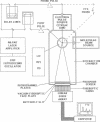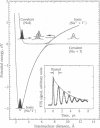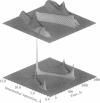Abstract
The experimental methodology for structural femtochemistry of reactions is considered. With the extension of femtosecond transition-state spectroscopy to the diffraction regime, it is possible to obtain in a general way the trajectories of chemical reactions (change of internuclear separations with time) on the femtosecond time scale. This method, considered here for simple alkali halide dissociation, promises many applications to more complex reactions and to conformational changes. Alignment on the time scale of the experiments is also discussed.
Full text
PDF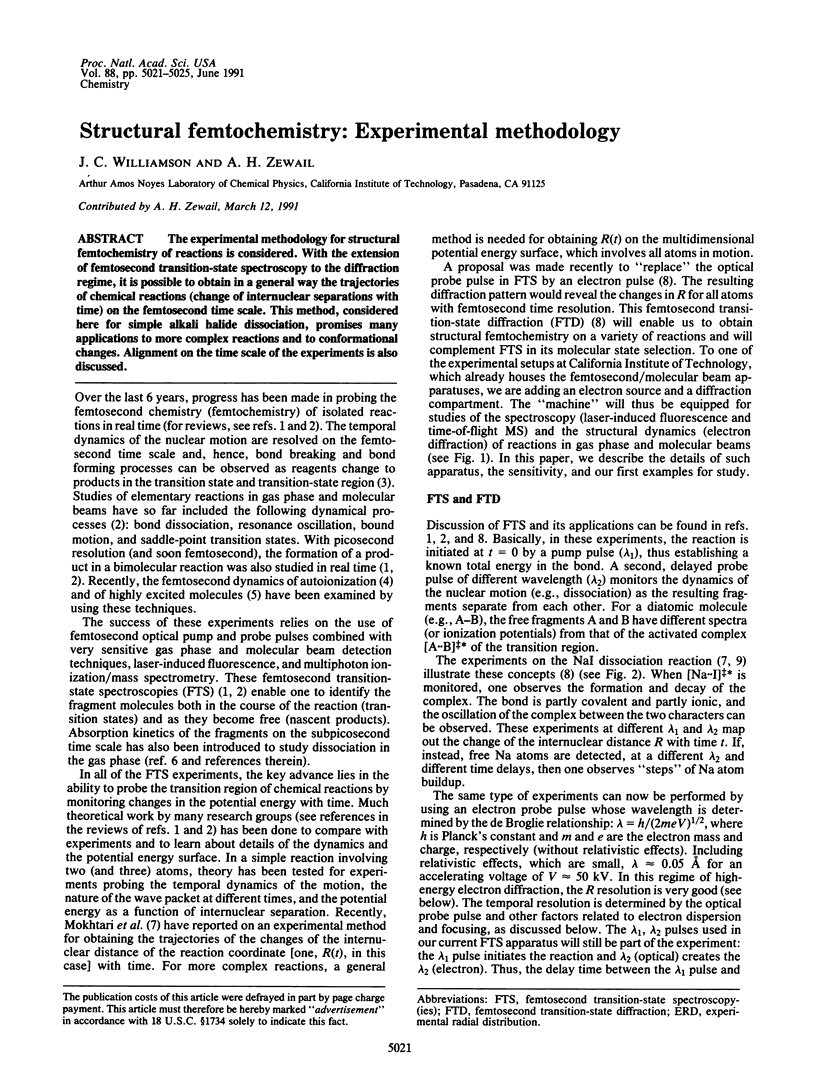
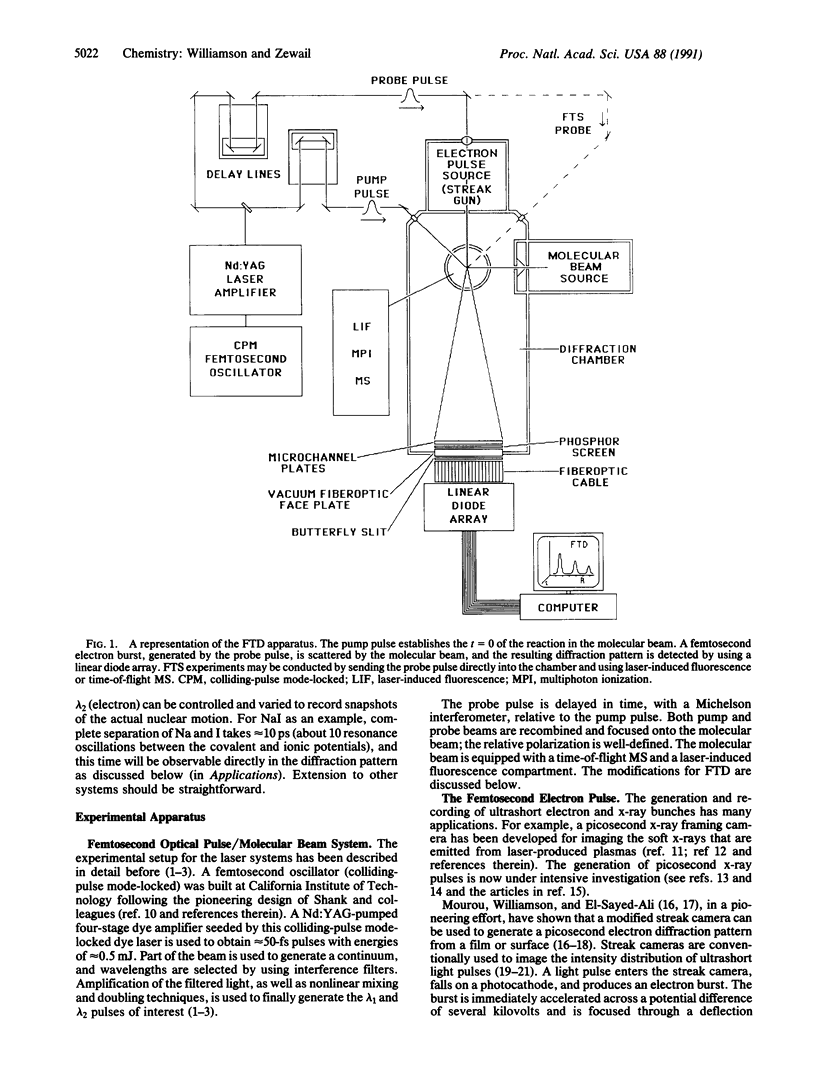
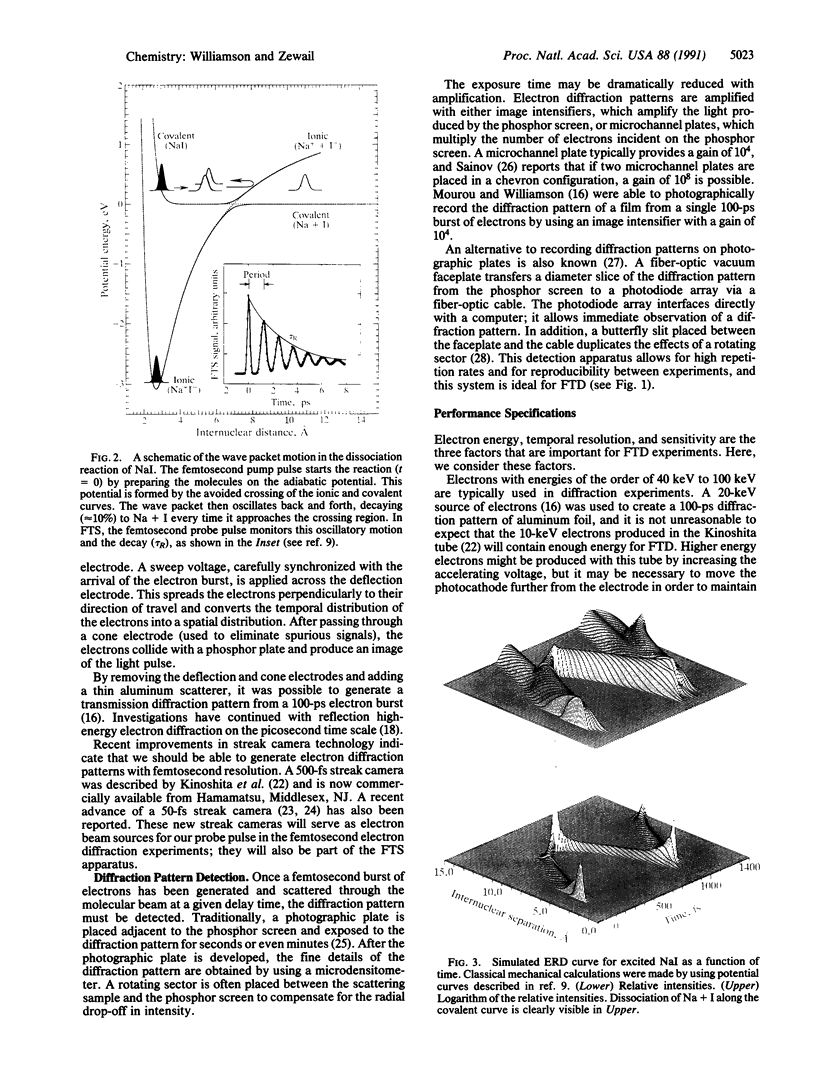
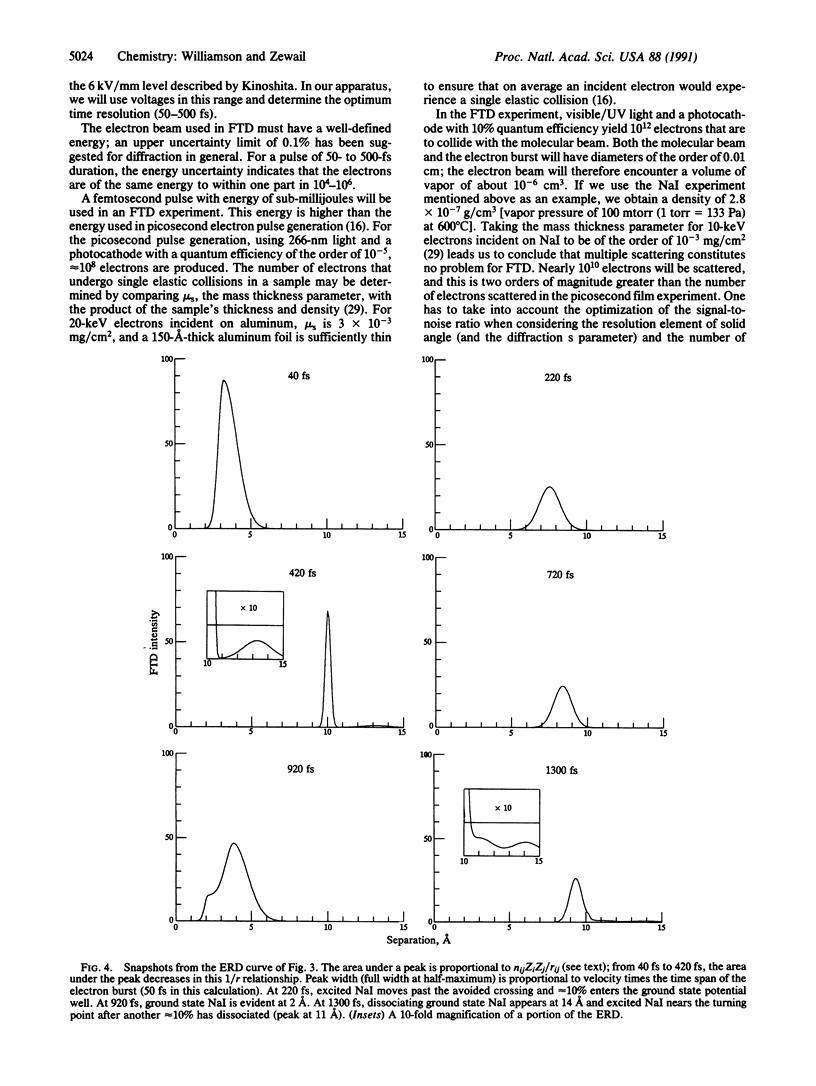

Images in this article
Selected References
These references are in PubMed. This may not be the complete list of references from this article.
- Baumert T, Bühler B, Thalweiser R, Gerber G. Femtosecond spectroscopy of molecular autoionization and fragmentation. Phys Rev Lett. 1990 Feb 12;64(7):733–736. doi: 10.1103/PhysRevLett.64.733. [DOI] [PubMed] [Google Scholar]
- Frankel R. D., Forsyth J. M. Nanosecond X-ray diffraction from biological samples with a laser-produced plasma source. Science. 1979 May 11;204(4393):622–624. doi: 10.1126/science.432665. [DOI] [PubMed] [Google Scholar]
- Murnane M. M., Kapteyn H. C., Rosen M. D., Falcone R. W. Ultrafast X-ray Pulses from Laser-Produced Plasmas. Science. 1991 Feb 1;251(4993):531–536. doi: 10.1126/science.251.4993.531. [DOI] [PubMed] [Google Scholar]
- Shank C. V. Investigation of ultrafast phenomena in the femtosecond time domain. Science. 1986 Sep 19;233(4770):1276–1280. doi: 10.1126/science.233.4770.1276. [DOI] [PubMed] [Google Scholar]
- Walkup RE, Misewich JA, Glownia JH, Sorokin PP. Time-resolved absorption spectra of dissociating molecules. Phys Rev Lett. 1990 Nov 5;65(19):2366–2369. doi: 10.1103/PhysRevLett.65.2366. [DOI] [PubMed] [Google Scholar]
- Zewail A. H. Laser femtochemistry. Science. 1988 Dec 23;242(4886):1645–1653. doi: 10.1126/science.242.4886.1645. [DOI] [PubMed] [Google Scholar]



